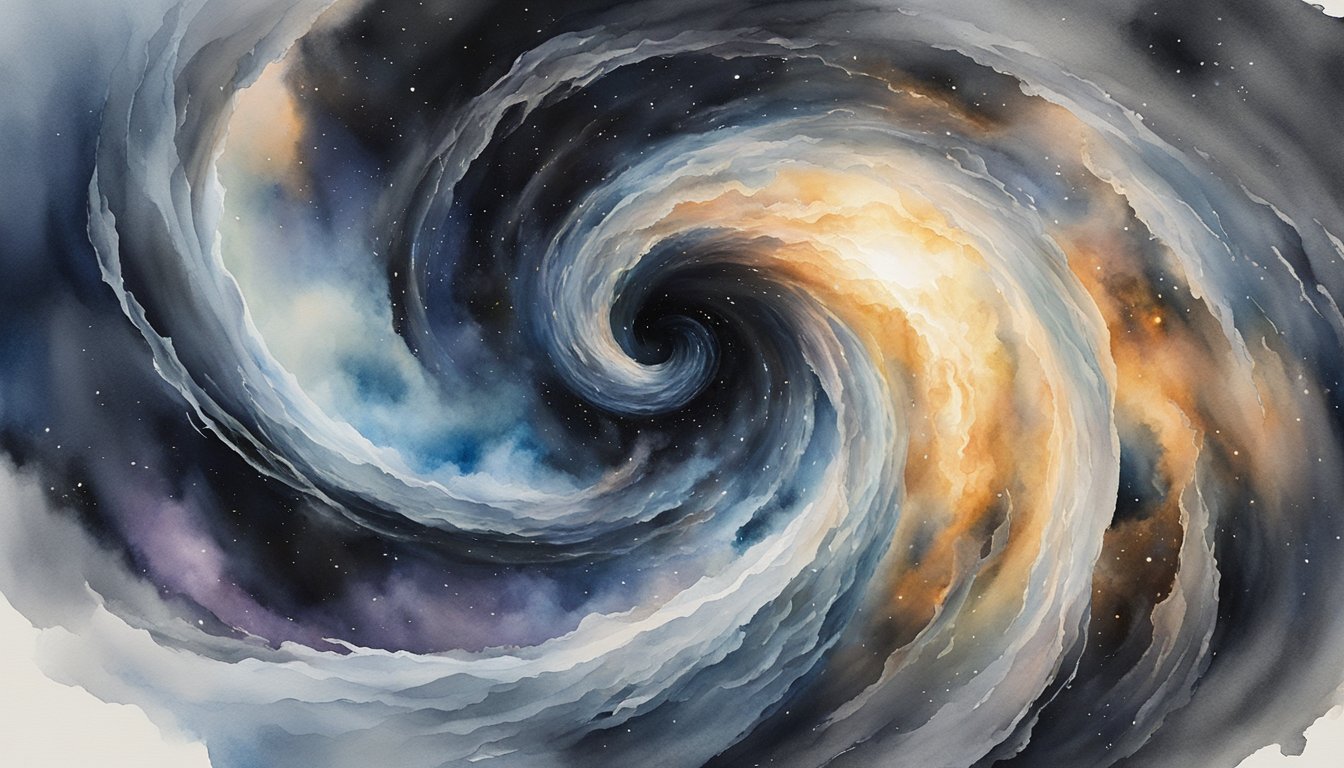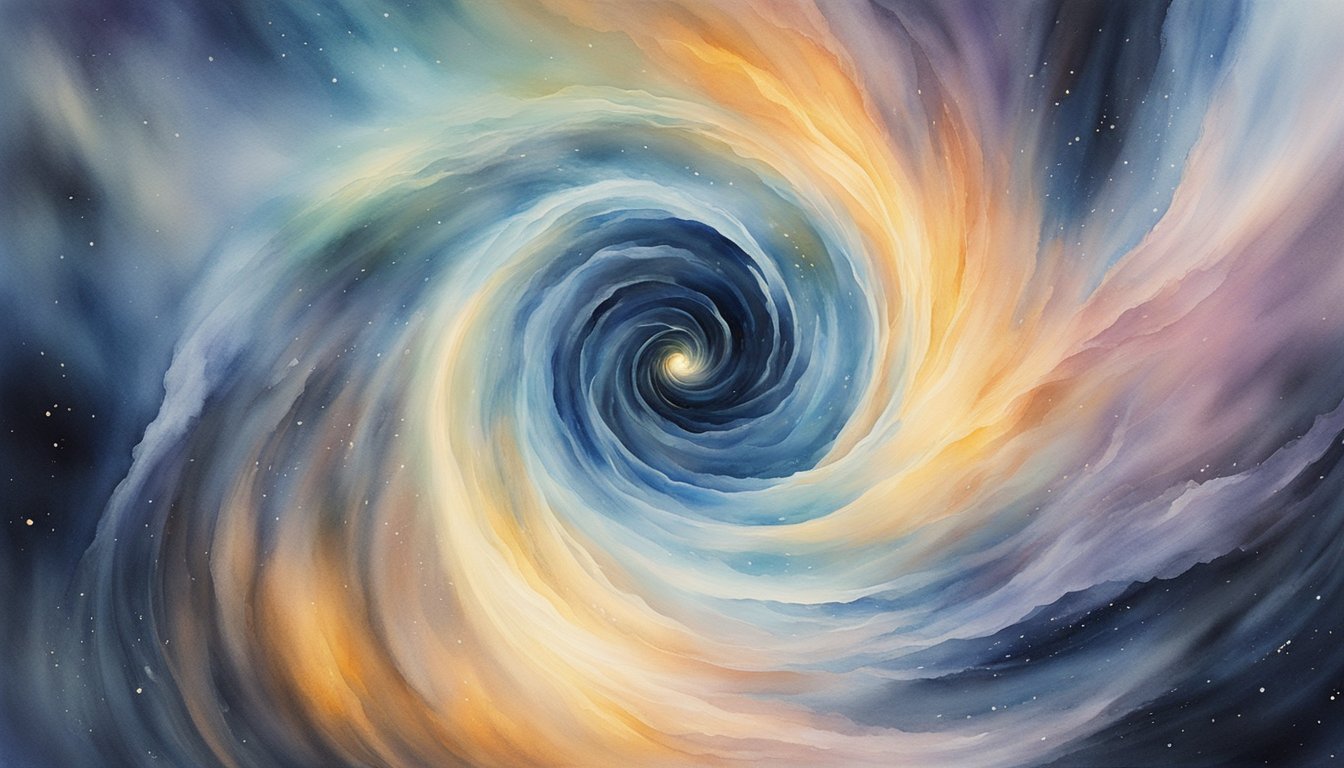Capturing the Black Hole Portrait
In a monumental effort to visualize the invisible, astrophysicists have peeled back the celestial curtains, allowing a glimpse at a black hole’s shadow against the backdrop of the cosmos.
Event Horizon Telescope Collaboration
The Event Horizon Telescope (EHT) Collaboration is a global network of radio telescopes that unites to form an Earth-sized virtual telescope. The collective power of observatories from across the planet, including those in locations such as Chile and the South Pole, creates unprecedented resolution. This collaboration aligns with Einstein’s predictions of strong gravity’s effects, enabling the capture of a black hole’s silhouette despite its enigmatic nature.
Imaging Techniques and Challenges
Imaging a black hole requires overcoming immense challenges, such as differentiating the black hole’s event horizon from the surrounding accretion disk. The EHT achieves this by utilizing very long baseline interferometry, which links radio telescopes worldwide to focus on galaxy M87. With algorithms created by computer scientists like Katie Bouman, the EHT interprets petabytes of data and stitches it into an image. This process is akin to listening for the quiet murmur of a black hole’s shadow amidst the clamor of galactic radiation.
Historic First Photographs
The historic first photographs of a black hole from galaxy M87 were a pivotal moment in astrophysics. Captured by the EHT, the images display the black hole’s shadow against the glowing ring of the accretion disk, confirming Einstein’s theory of general relativity on a cosmic scale. These photographs not only validate decades of theoretical physics but also pave the way for future observations that will deepen our understanding of the universe’s most mysterious entities.
The Science of Black Holes

Black holes are some of the most compelling objects studied in astrophysics, melding extreme physics with the profound effects of gravity. The following section delves into this fascinating subject, explore the intricacies of black hole science.
Understanding Gravity and Singularities
A black hole is a region in space where gravity is so intense that nothing, not even light, can escape its pull. At the core of a black hole lies the singularity, a point of infinite density where all the black hole’s mass is concentrated. The general theory of relativity, proposed by Albert Einstein, predicts the existence of these singularities, which warp the fabric of space and time to a point where traditional physics breaks down.
Phenomena Around the Event Horizon
The event horizon is the boundary around a black hole from which escape is impossible. It acts as the point of no return. Various phenomena can occur in this region, such as the acceleration of matter falling into the black hole and the production of immense jets of particles that shoot out from its vicinity, outlining the profound gravitational pull the black hole exerts on its surroundings.
Supermassive Black Holes and Galaxies
Supermassive black holes, millions to billions of times the mass of our Sun, reside at the centers of galaxies, including the Milky Way. These black holes play a crucial role in the evolution and dynamics of galaxies. The well-known example, Sagittarius A (Sgr A), is located approximately 26,000 light-years from Earth in the galactic center of the Milky Way, illustrating the interconnections between black holes and their cosmic neighborhoods. The gravitational pull of these massive objects influences everything from star formation to the orbits of stars at a galactic scale, and their activity can be traced back through millions of years of galactic history.
How Did Stephen Hawking Contribute to Our Understanding of Black Holes?
Stephen Hawking’s groundbreaking research transformed our understanding of black holes. His theories on Hawking radiation challenged conventional wisdom, suggesting that black holes could emit energy and potentially evaporate. This radical idea enhances the legacy of a cosmic visionary, inspiring future generations to explore the mysteries of the universe and deepen scientific inquiry.
Broader Impact and Future Research

The visualization of black holes not only transforms our understanding of the cosmos but also profoundly impacts public engagement with science and spurs technological advancements. As researchers continue to probe the depths of space, each breakthrough unfurls new potential for knowledge.
Advancing Astrophysics
Astrophysical research hinges on the ability to observe and understand phenomena millions of light-years away. Capturing an image of Sagittarius A*, the supermassive black hole at the center of the Milky Way Galaxy, represents a monumental leap in verifying theories such as general relativity. The very existence of such images aids astrophysicists in studying the evolution of galaxies and the strong gravity near supermassive black holes, offering clues to how these behemoths affect their surroundings.
Public Perception and Education
An image of a black hole is more than a scientific triumph; it’s a celestial spectacle that captivates the public imagination. Projects like the Event Horizon Telescope not only confirm that what was once deemed impossible is within reach, but also enhance science education by providing tangible proof of abstract concepts. By turning the distant universe into a topic discussed everywhere from classrooms to the National Press Club, the fascination with black holes fosters a deeper appreciation for the wonders of the universe.
Technological Development and Collaboration
Photographing phenomena like Sgr A*, thousands of light-years away, presents a significant challenge that drives innovation. It necessitates advancements in technology that push the boundaries of observation and analysis, often leading to unforeseen benefits in various scientific fields and practical applications. Furthermore, international efforts, such as those required to capture such images, underscore the importance of collaboration across countries and disciplines, knitting together the global scientific community in pursuit of common goals.

